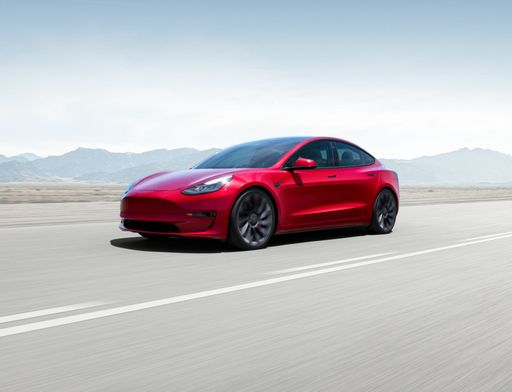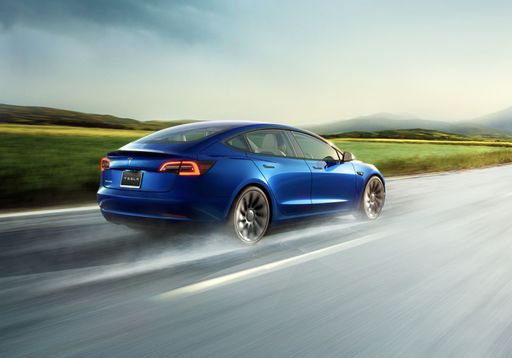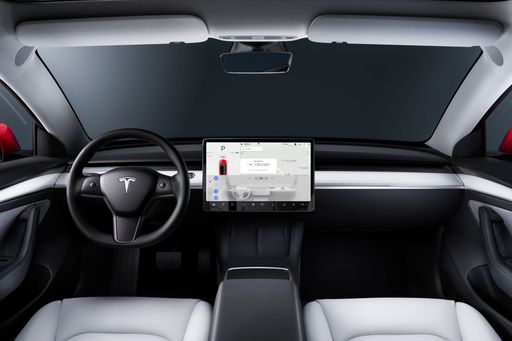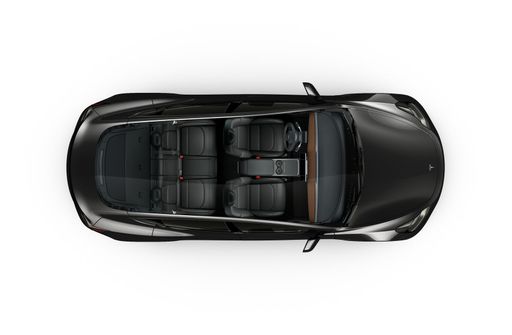Tesla Model 3 vs Kia PV5 – Which one offers the better deal?
Two cars, one duel: Tesla Model 3 meets Kia PV5.
Which one wins in performance, efficiency and value for money? Find out now!
Costs and Efficiency:
When it comes to price and running costs, the biggest differences usually appear. This is often where you see which car fits your budget better in the long run.
Kia PV5 has a slight advantage in terms of price – it starts at 32800 £, while the Tesla Model 3 costs 34300 £. That’s a price difference of around 1457 £.
In terms of energy consumption, the advantage goes to the Tesla Model 3: with 13.20 kWh per 100 km, it’s significantly more efficient than the Kia PV5 with 19.80 kWh. That’s a difference of about 6.60 kWh.
As for range, the Tesla Model 3 performs decisively better – achieving up to 750 km, about 350 km more than the Kia PV5.
Engine and Performance:
Power, torque and acceleration are the classic benchmarks for car enthusiasts – and here, some clear differences start to show.
When it comes to engine power, the Tesla Model 3 has a decisively edge – offering 460 HP compared to 163 HP. That’s roughly 297 HP more horsepower.
In acceleration from 0 to 100 km/h, the Tesla Model 3 is decisively quicker – completing the sprint in 3.10 s, while the Kia PV5 takes 10.70 s. That’s about 7.60 s faster.
In terms of top speed, the Tesla Model 3 performs convincingly better – reaching 262 km/h, while the Kia PV5 tops out at 135 km/h. The difference is around 127 km/h.
There’s also a difference in torque: Tesla Model 3 pulls convincingly stronger with 660 Nm compared to 250 Nm. That’s about 410 Nm difference.
Space and Everyday Use:
Whether family car or daily driver – which one offers more room, flexibility and comfort?
Both vehicles offer seating for 5 people.
In curb weight, Tesla Model 3 is minimal lighter – 1822 kg compared to 1860 kg. The difference is around 38 kg.
In terms of boot space, the Kia PV5 offers decisively more room – 1320 L compared to 594 L. That’s a difference of about 726 L.
When it comes to payload, Kia PV5 significantly takes the win – 790 kg compared to 333 kg. That’s a difference of about 457 kg.
Who comes out on top?
Overall, the Tesla Model 3 shows itself to be wins the duel decisively and secures the title of DriveDuel Champion.
It convinces with the more balanced overall package and proves to be the more versatile choice for everyday use.
 @ Tesla, Inc.
@ Tesla, Inc.
Tesla Model 3
Tesla Model 3
The Tesla Model 3 slices through daily commuting with a silent, confident shove that makes petrolheads reassess their life choices, while its minimalist cabin feels more like a slick gadget gallery than a traditional car interior. For buyers after a fuss-free, tech-forward electric with plenty of grin factor and low running drama, it’s hard to beat—just don't be surprised when the car updates itself overnight.
details @ Tesla, Inc.
@ Tesla, Inc.
 @ Tesla, Inc.
@ Tesla, Inc.
 @ Tesla, Inc.
@ Tesla, Inc.
 @ Tesla, Inc.
@ Tesla, Inc.
Kia PV5
The Kia EV5 is an exciting new entrant in the landscape of electric SUVs, promising a blend of style and innovation that captures attention. It boasts a sleek and modern design that aligns with Kia's evolving aesthetic identity, blending practicality with eye-catching details. With its foray into the electric vehicle segment, the EV5 is set to offer a highly competitive option for those looking to embrace sustainable mobility without compromising on comfort or tech features.
details
 @ Tesla, Inc.
@ Tesla, Inc.
|
|
|
|
|
Costs and Consumption |
|
|---|---|
|
Price
34300 - 50100 £
|
Price
32800 - 38900 £
|
|
Consumption L/100km
-
|
Consumption L/100km
-
|
|
Consumption kWh/100km
13.2 - 16.7 kWh
|
Consumption kWh/100km
19.8 - 20.3 kWh
|
|
Electric Range
550 - 750 km
|
Electric Range
288 - 400 km
|
|
Battery Capacity
64.5 - 83 kWh
|
Battery Capacity
51.5 - 71.2 kWh
|
|
co2
0 g/km
|
co2
0 g/km
|
|
Fuel tank capacity
-
|
Fuel tank capacity
-
|
Dimensions and Body |
|
|---|---|
|
Body Type
Sedan
|
Body Type
Cargo Van, Bus
|
|
Seats
5
|
Seats
2 - 5
|
|
Doors
4
|
Doors
4 - 5
|
|
Curb weight
1822 - 1929 kg
|
Curb weight
1860 - 2145 kg
|
|
Trunk capacity
594 L
|
Trunk capacity
1320 L
|
|
Length
4720 - 4724 mm
|
Length
4695 mm
|
|
Width
1850 mm
|
Width
1850 - 1895 mm
|
|
Height
1431 - 1440 mm
|
Height
1923 mm
|
|
Max trunk capacity
-
|
Max trunk capacity
2300 - 4420 L
|
|
Payload
303 - 333 kg
|
Payload
505 - 790 kg
|
Engine and Performance |
|
|---|---|
|
Engine Type
Electric
|
Engine Type
Electric
|
|
Transmission
Automatic
|
Transmission
Automatic
|
|
Transmission Detail
Reduction Gearbox
|
Transmission Detail
Reduction Gearbox
|
|
Drive Type
Rear-Wheel Drive, All-Wheel Drive
|
Drive Type
Front-Wheel Drive
|
|
Power HP
283 - 460 HP
|
Power HP
121 - 163 HP
|
|
Acceleration 0-100km/h
3.1 - 6.1 s
|
Acceleration 0-100km/h
10.7 - 16.3 s
|
|
Max Speed
201 - 262 km/h
|
Max Speed
135 km/h
|
|
Torque
420 - 660 Nm
|
Torque
250 Nm
|
|
Number of Cylinders
-
|
Number of Cylinders
-
|
|
Power kW
208 - 338 kW
|
Power kW
89 - 120 kW
|
|
Engine capacity
-
|
Engine capacity
-
|
General |
|
|---|---|
|
Model Year
2025
|
Model Year
2025
|
|
CO2 Efficiency Class
A
|
CO2 Efficiency Class
A
|
|
Brand
Tesla
|
Brand
Kia
|
Is the Tesla Model 3 offered with different drivetrains?
Available configurations include Rear-Wheel Drive or All-Wheel Drive.
The prices and data displayed are estimates based on German list prices and may vary by country. This information is not legally binding.
